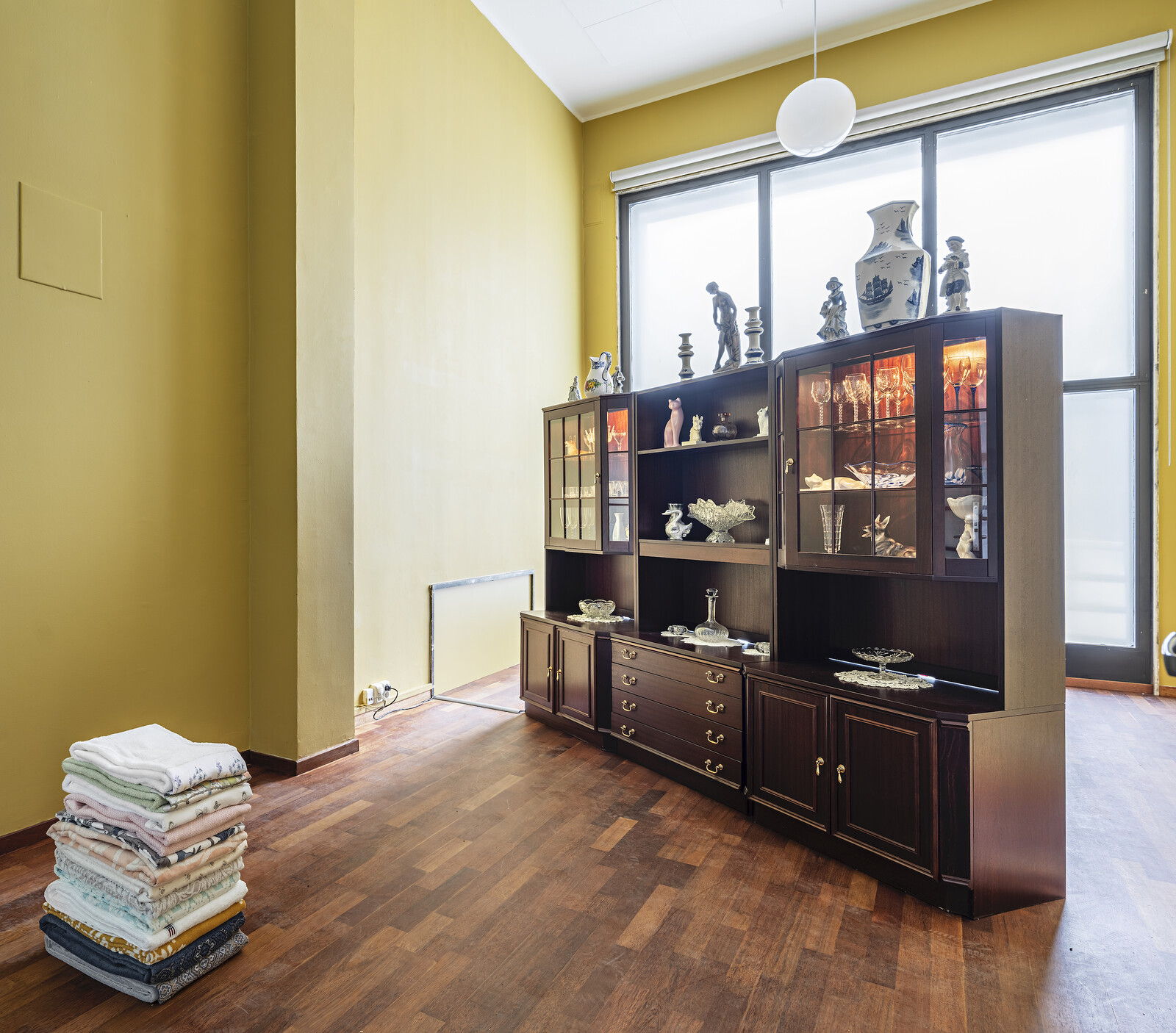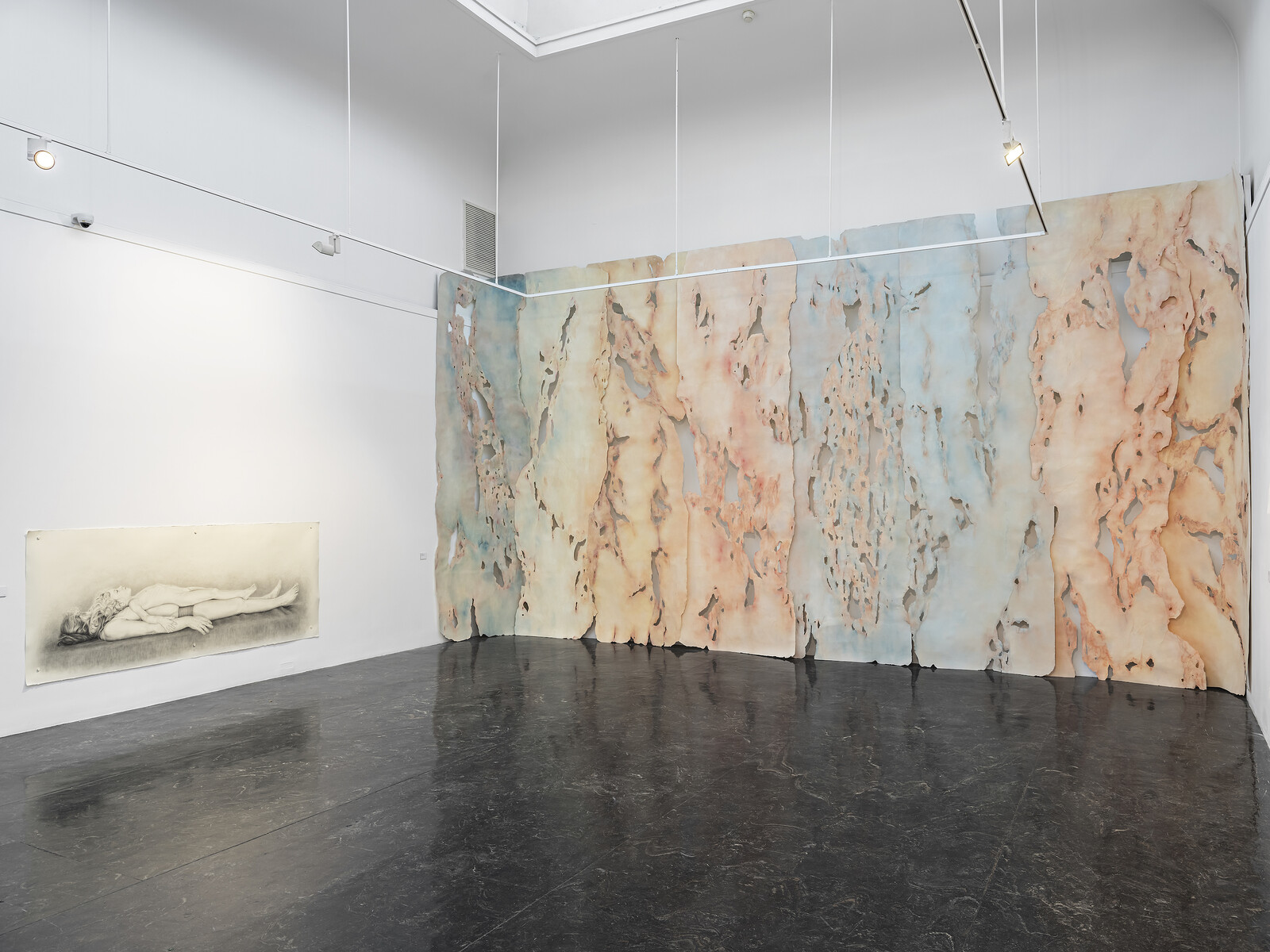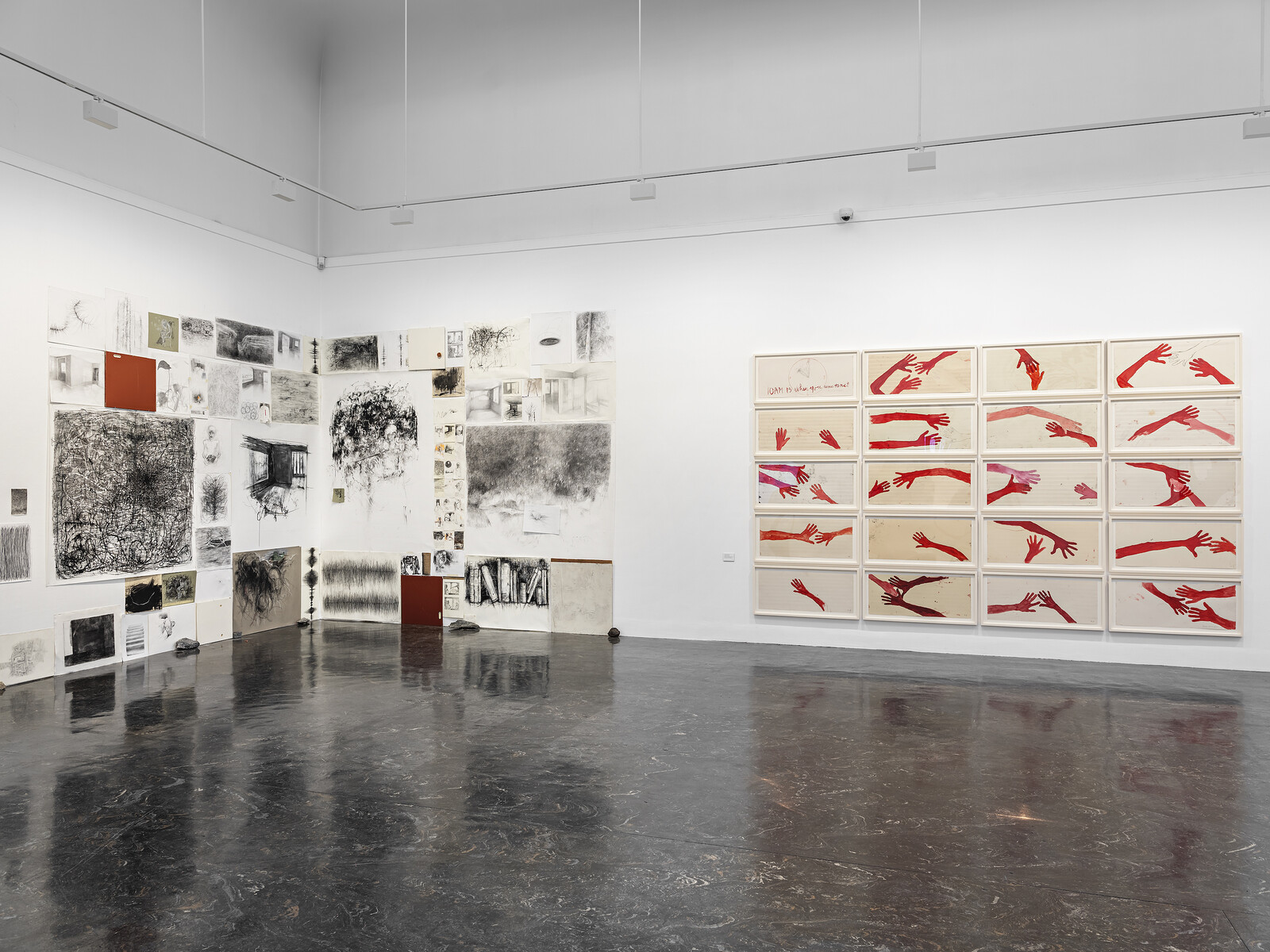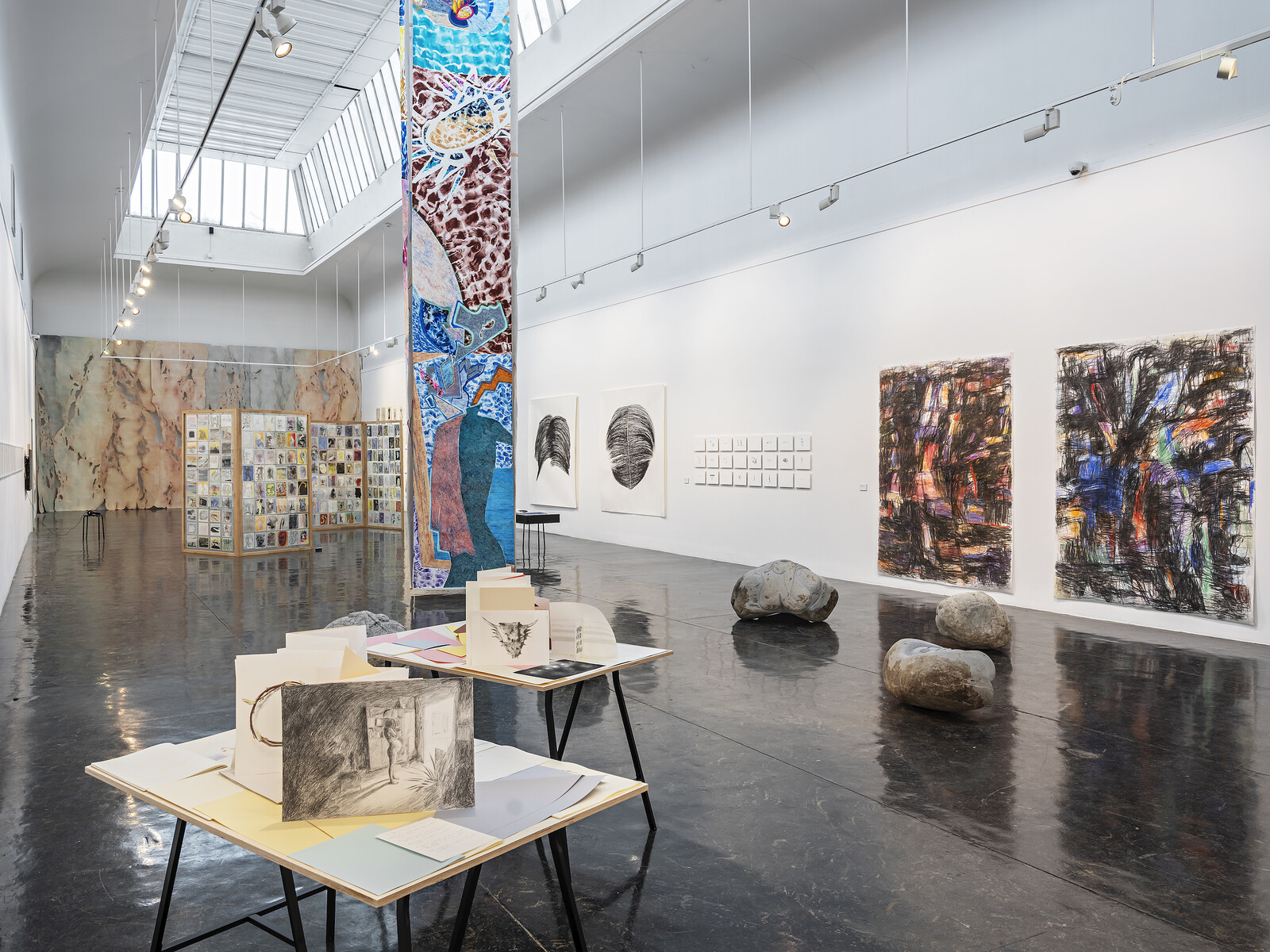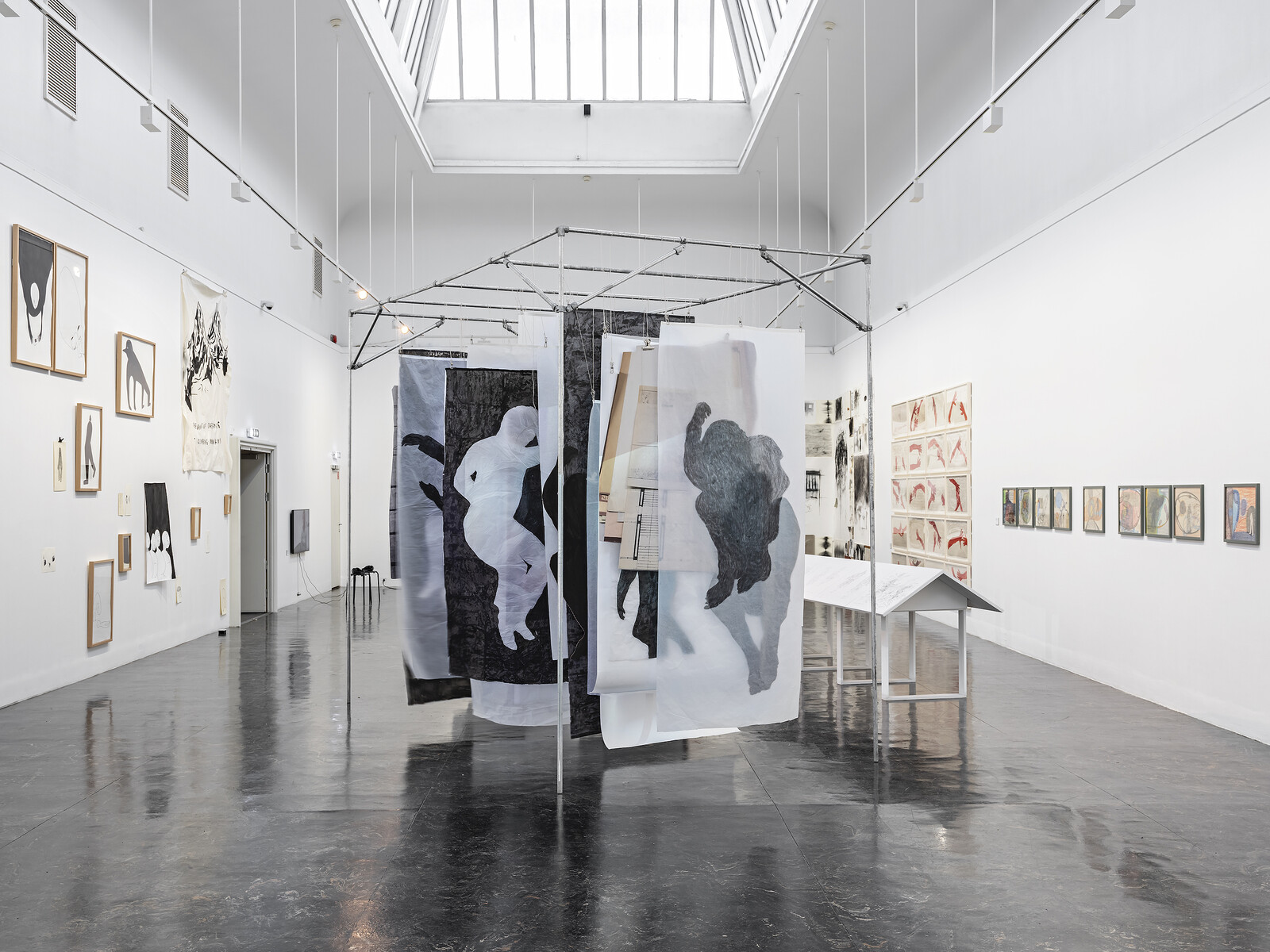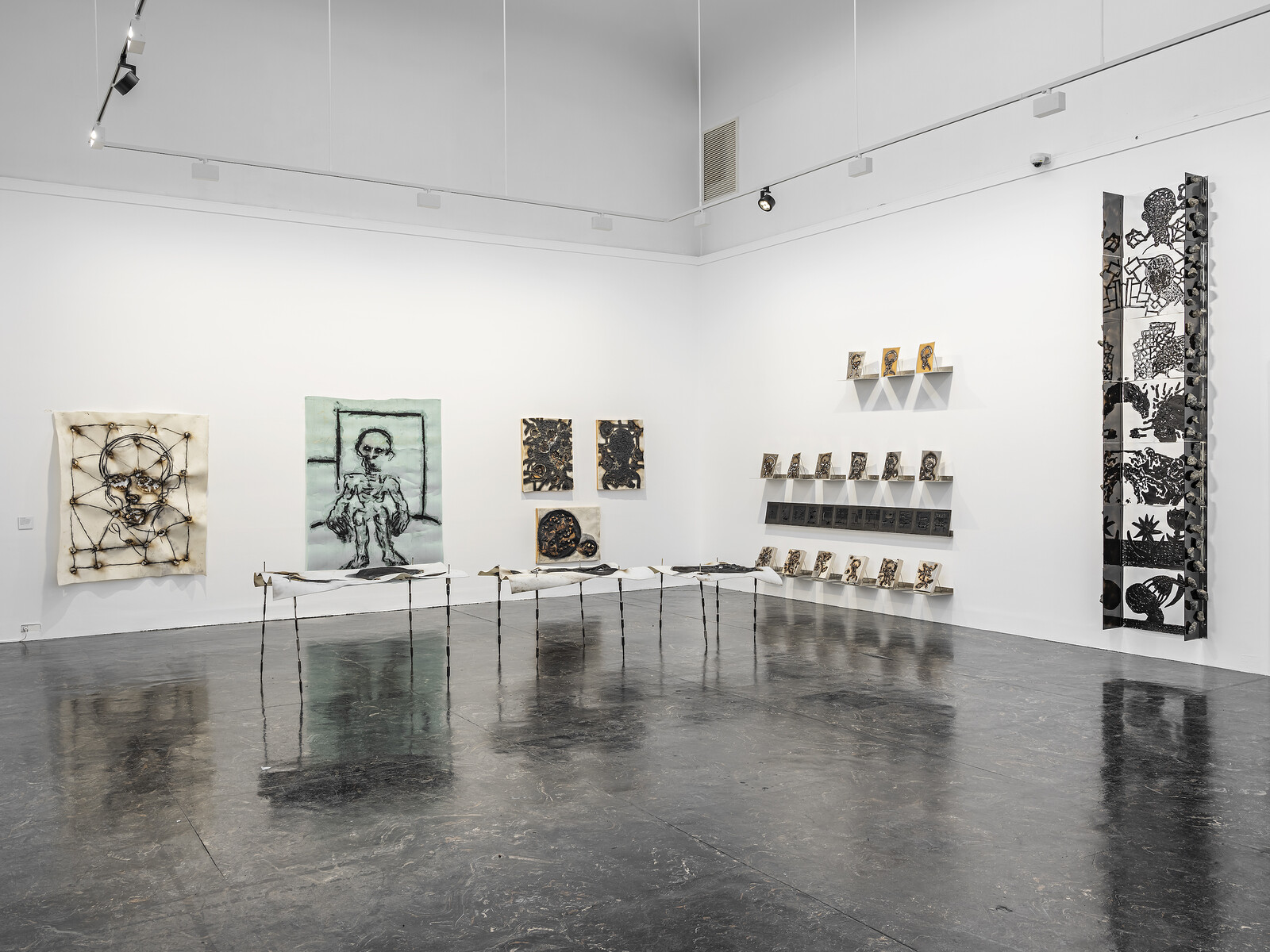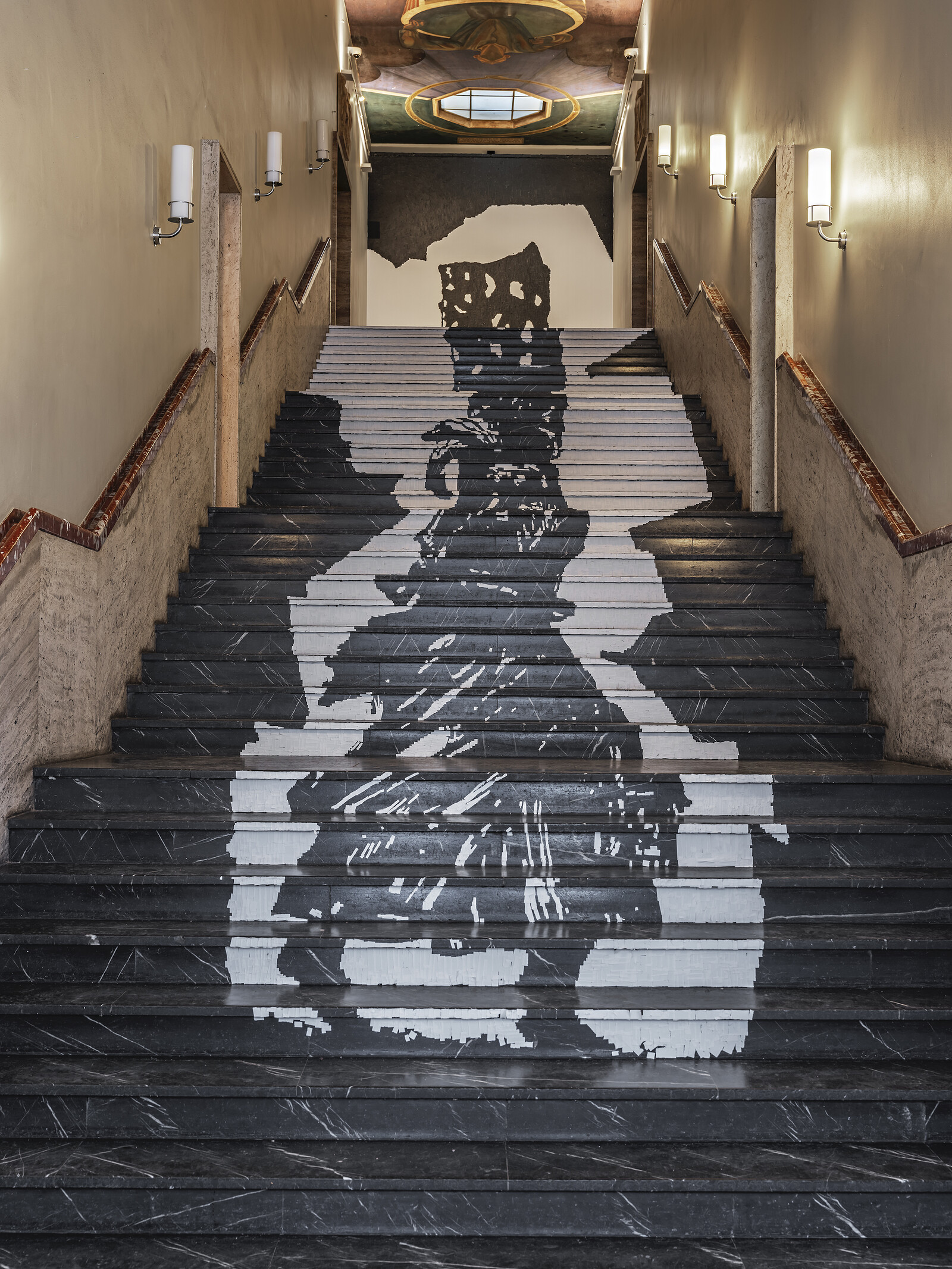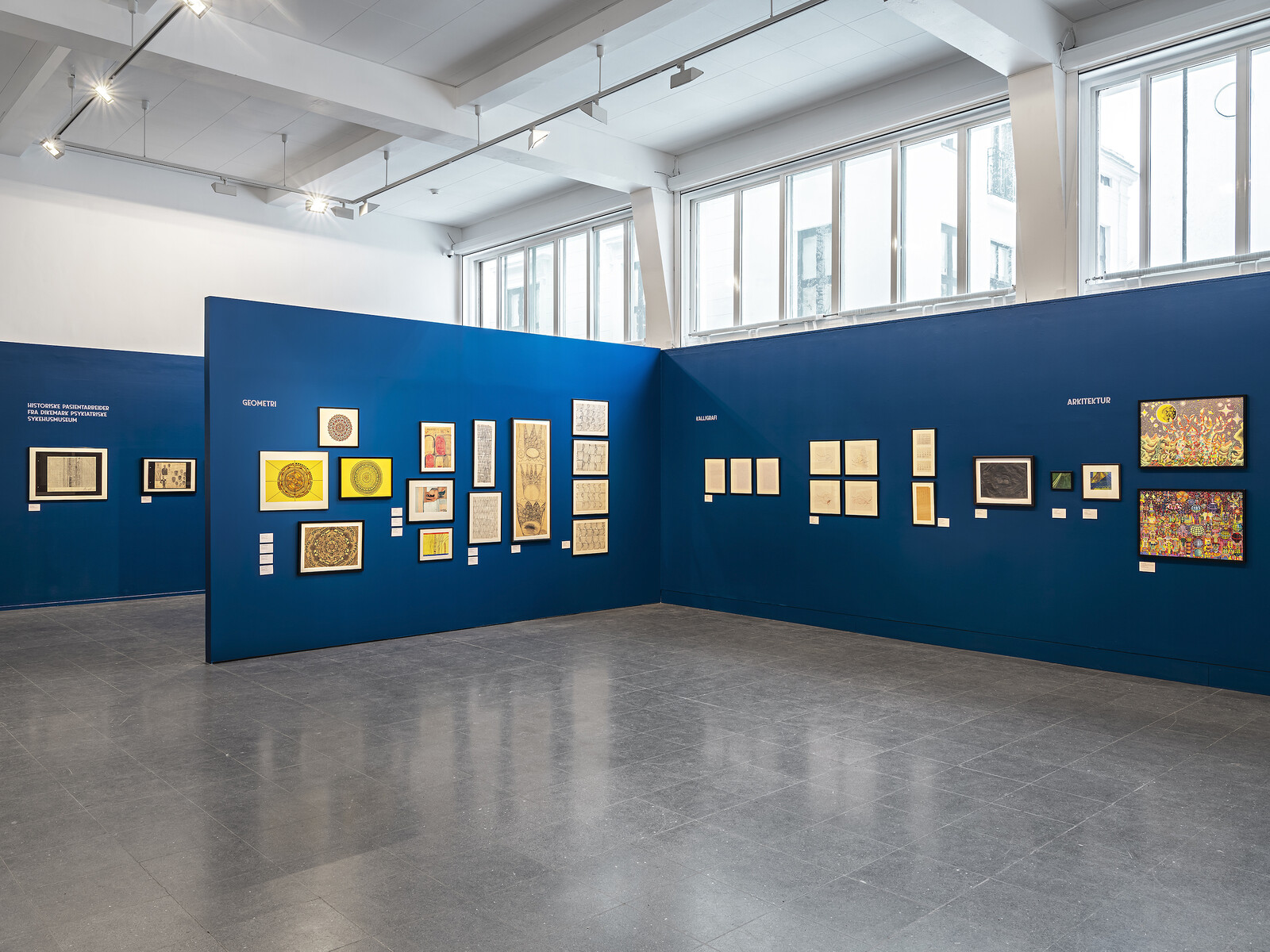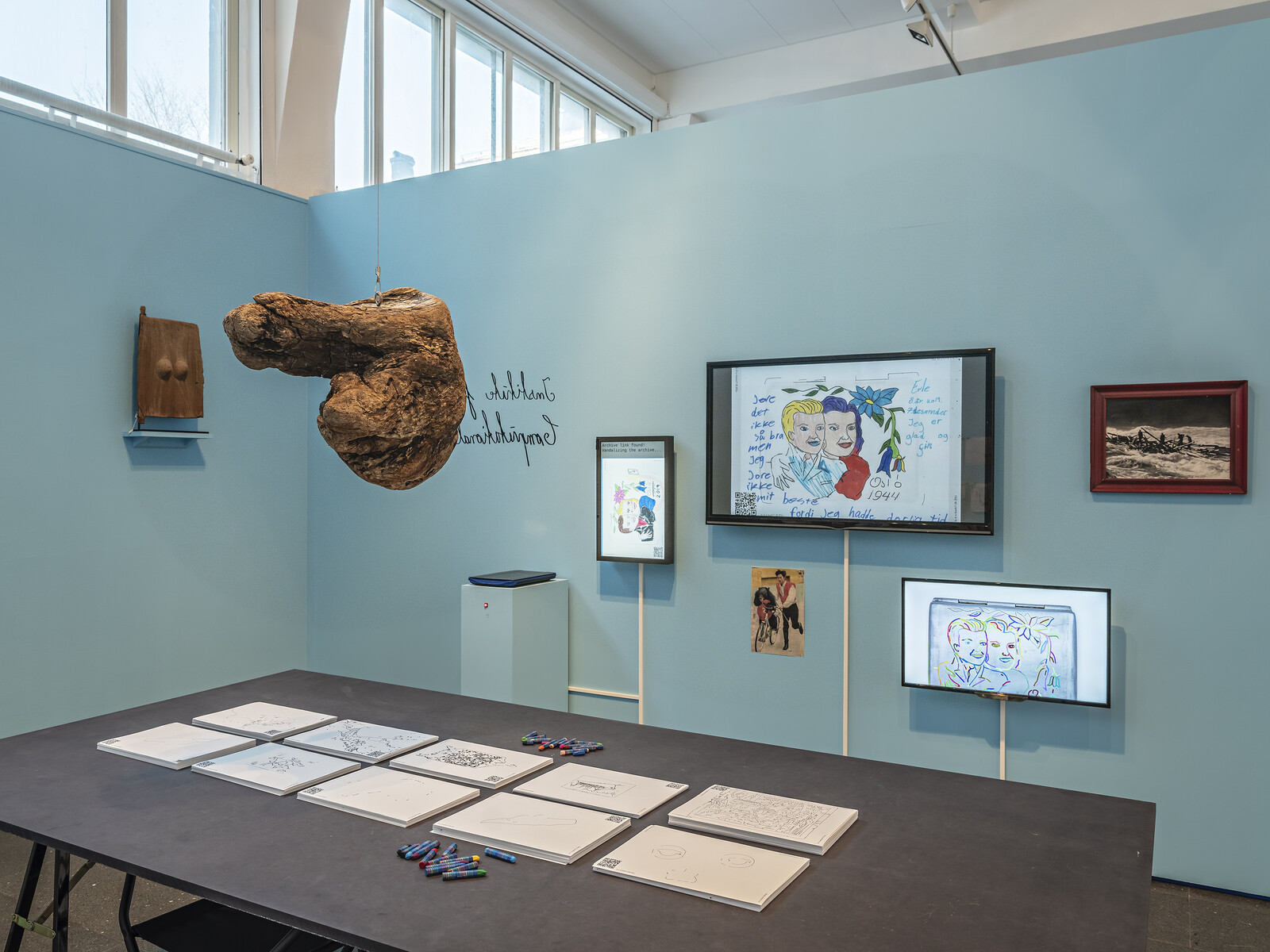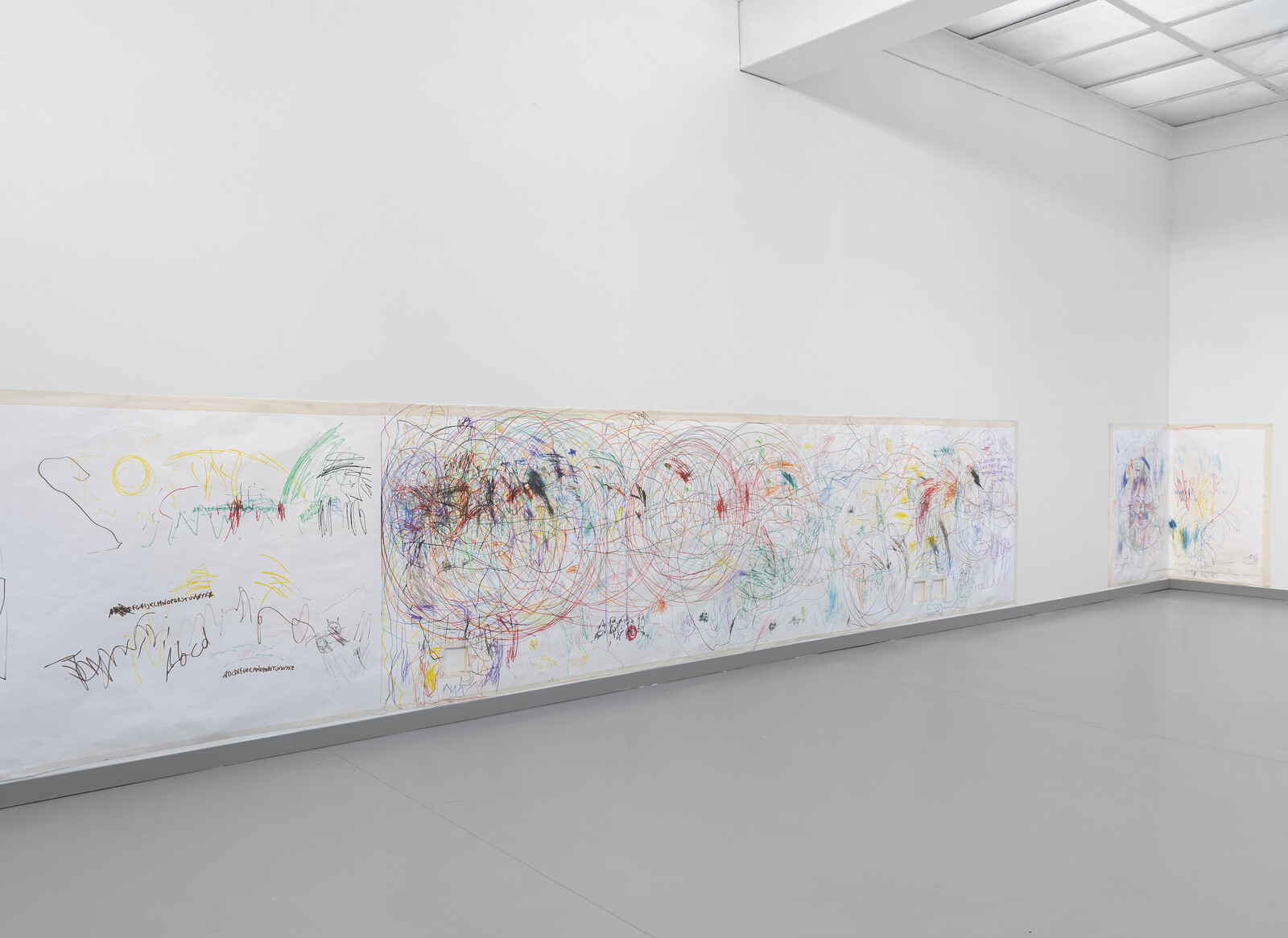Cecilia Jiménez Ojeda’s enigmatic installation Maria! Por Qué?! [Maria! Why?!] (2019) is an unexpected thrill in this otherwise unsurprising Drawing Triennial. A large china cabinet filled with kitsch figurines is positioned diagonally across a small room. Hidden behind it is the lid of a casket, strewn with withered roses. Every now and then, a nearby stack of neatly folded towels emits clanking noises, which sound like someone angrily washing dishes next door. The hinting at domestic conflict and connotations of death create a sense of unease, counterpointed by touches of absurdity, such as the engraved plaques featuring stage directions for a soap opera, which are mounted to the back of the cabinet. Displayed amongst these are a series of photorealistic drawings of a bundled leather belt, a broken mirror, a disassembled doll, and what appear to be migration papers issued to the artist as a young child. The tension is enhanced by the installation’s secretive quality, and its wavering between being a drama and a farce.
In the exhibition guide, curator Helga-Marie Nordby writes about the recent unearthing of an artefact from the Blombos Cave in South Africa: a 73,000-year-old flake of stone on which a cross-hatched pattern has been drawn in ochre crayon. The triennial describes drawing as a form of mark-making that predates the invention of writing, as an “innate language” and “a potential in human beings in general.”1 While this universalizing claim has a flattening effect on the show as a whole, several individual pieces stand out. Prominent among them are Ana Mendieta’s untitled video performances (1978 and ‘81) from her “Silueta” series, presented on flat-screen monitors. In the performances documented here, the artist digs into the ground, outlines her body’s profile with gunpowder, and ignites it. By burning a representation of herself into the landscape, she suggests a spiritual connection between the human body and the natural world, and the body as a site of trauma. Adjacent to the documentation of Mendieta’s performances is Per Inge Bjørlo’s violent, highly expressive installation - Og såra veks i oss alle [- And the wounds grow in us all] (2019). Bjørlo’s lamenting title points to the technique by which his pieces are conceived, whereby the artist draws on felt, smears the drawings with wax, and sets them alight. The resultant marks resemble gashes torn in the scorched materials. Randi Nygård interprets human emotion more quietly. For her frottages Foreheads (Oskar, Sigmund, Randi, Munan, Thorbjørn) (2014/17), the artist placed paper directly on the foreheads of five models and rubbed the surface with charcoal, adopting a technique that has been used by archaeologists and surrealists alike. Both document and drawing, Foreheads delicately captures time passing on a human scale: worry, joy, confusion, and concentration are evident in her sitters’ expressions.
Included in the Triennale’s extended program are three satellite exhibitions. “Ornaments of the Soul: Ornamental Drawings in Norwegian Outsider Art,” curated by Simone Ritter and exhibited on the ground floor of Kunstnernes Hus, features 30 ornamental drawings from the Trastad Collections, a museum of work by outsider artists. They are presented alongside works made by anonymous patients at the Dikemark psychiatric hospital in Asker, close to Oslo, in the 1920s. Though the patients’ identities are protected, the question of whether or not they consented, or could consent, to the display of their drawings in an art exhibition, remains unanswered. On show on the same floor is “The Archive’s Arabesque.” Curated by Ellef Prestsæter, the exhibition is a continuation of Prestsæter’s work with the artist Guttorm Guttormsgaard, who passed away last October, and his collection of artworks and objects, which includes handcrafted tools, engraved tobacco boxes, and talismans. For this exhibition, Prestsæter invited younger artists make new works in response to the archive. Guttormsgaard is also represented back in the main exhibition, but as an artist rather than collector. He drew a self-portrait every day: hundreds of them are presented in the Triennial behind large glass panes, depicting the pensive artist as he neared the end of his life.
In contrast, Marthe Ramm Fortun and Andrea Galiazzo’s collaborative exhibition “Leda and the Swan,” on show at The Drawing Association in the city center, displays the early stages of human life in the form of drawings the couple’s toddler made on the walls of the their shared studio. While these drawings—both pastime and education, training and compulsion—support the Triennial’s claim that drawing is an innate activity, the colorful scribbles are presented by the artists less as evidence of children’s self-expression than of the negotiation of the double role of being an artist and a parent. In contrast to the universalizing impulse evident in its overarching theme, this Triennial is at its strongest in such moments, when individual works address particular situations—be it Jiménez Ojeda’s idiosyncratic excavation of her past, Nygård’s touch-drawings, or Ramm Fortun and Galiazzo’s logistics of parenting.
https://kunstnerneshus.no/en/exhibitions/tegnetriennalen2019.

